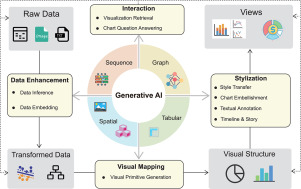When organisations design a process, they imagine an ideal path—smooth, efficient, predictable. But reality, like a busy city’s traffic, rarely flows as planned. Unexpected detours, bottlenecks, and shortcuts emerge. Process model visualisation is like laying two maps side by side: one showing the intended roads (the a priori model) and the other revealing where people actually drive (the discovered model). The beauty—and challenge—lies in spotting where they diverge and understanding why.
The Blueprint vs. the Journey
Imagine you’re an architect who designed a perfect building plan. Yet when construction begins, workers encounter uneven ground, supply delays, and improvised solutions. The final structure resembles your blueprint, but with quirks. In the world of processes, the a priori model is that blueprint—crafted through policy, experience, and compliance rules. The discovered model, extracted from event logs and operational data, represents how work truly unfolds in daily life.
Visualising both offers a mirror to reality. By overlaying them, analysts uncover not only where rules were broken, but also where innovation thrived. It’s less about finding fault and more about understanding adaptability—a skill honed in advanced Data Analytics classes in Mumbai, where students learn to interpret not just numbers but the narratives they reveal.
Visualising Flow: Traces That Tell Stories
Every process is a story of movement. In manufacturing, it’s the path from order to delivery. In healthcare, the focus is on the patient’s journey from diagnosis to recovery. The process trace—a series of events recorded in logs—becomes the heartbeat of analysis.
Tools like Petri nets, BPMN diagrams, or directly-follows graphs help transform invisible data into tangible visuals. The colours, shapes, and connections tell a tale: green for compliance, red for deviations, grey for idle loops. Analysts can “read” these like a detective reads footprints—tracing why one case looped back three times while another finished in half the time.
This kind of visualisation turns analytics from abstract math into an intuitive art form. Learners exploring Data Analytics classes in Mumbai discover that visual reasoning is as critical as statistical modelling—each diagram is a conversation between design and behaviour.
Highlighting Deviations: When Reality Rebels
Deviations aren’t always mistakes—they’re sometimes the fingerprints of human ingenuity. Consider a call centre where agents bypass a formal approval step to resolve customer issues faster. On the model, this shows as a bright red divergence. To a process miner, that red isn’t just an error—it’s a clue.
Techniques like token-based replay or conformance checking algorithms quantify how well each execution aligns with the reference model. Visual overlays—often using heatmaps or edge-thickness—make mismatches immediately visible. Red nodes might show missing steps; blue ones, unexpected shortcuts. These colourful contrasts reveal operational truth: whether inefficiencies stem from system flaws or brilliant improvisations under pressure.
From Discovery to Insight: The Role of Automation
Modern visualisation tools no longer rely solely on human interpretation. AI-assisted process mining can automatically highlight anomalies, suggest optimisations, or even simulate “what-if” scenarios. For example, clustering algorithms can group similar deviations, while predictive models estimate their impact on cycle time or cost.
Such automation transforms static diagrams into living systems. The models evolve as real data flows in—highlighting new trends, risks, or compliance breaches in near real-time. This fusion of human understanding with algorithmic precision exemplifies the future of analytical thinking. It is here that process mining becomes more than visualisation—it becomes foresight.
Designing for Understanding: Making the Complex Clear
Effective visualisation isn’t about cramming every detail into a chart; it’s about crafting clarity. Overly complex process maps can resemble tangled spaghetti, defeating their purpose. The goal is storytelling—showing cause, consequence, and context.
Simplified layers, interactive zoom, or aggregated pathways help users grasp the essence before diving into specifics. Colours evoke attention; motion can guide focus. Each visual choice reflects analytical intent: highlight efficiency? Show rework loops? Compare team performance? A good visualisation answers these silently.
The power of process visualisation lies in empathy—it bridges the perspective of data scientists, managers, and front-line workers. It transforms processes from rigid checklists into living systems that evolve through feedback and insight.
Conclusion: Seeing Beyond the Model
The journey from a priori to discovered isn’t about judgment—it’s about learning. When organisations visualise their processes, they’re not merely checking compliance; they’re discovering how real people navigate complexity.
Through thoughtful visualisation, analysts turn data into dialogue—between the ideal and the actual, the rule and the exception. It’s a practice that rewards curiosity as much as precision, inviting teams to ask not just where things differ, but why. In that gap between model and reality lies innovation, waiting to be seen.


